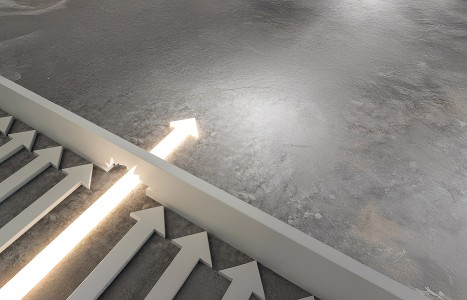You became a chiropractor to serve people, not an insurance company. You deserve to run a business that aligns with your values, supports your family and lights you up. Cash-based care isn’t just a pricing model – it’s a philosophy rooted in freedom, trust and respect for your patients and for yourself. Here's why - and how - to do it.
Helping Patients Through Their Surgery With Herbs
From time to time, patients under my care have a need to undergo surgery. Based on my experience from their many requests, I have developed the following simple approach to minimize any risk from herbal interactions and ensure a healthy recovery.
Surgery and Herbs: Do They Mix?
An opinion expressed by doctors and widely held in the medical community is that surgery and herbs do not mix. For example, an article in the influential medical journal Anesthesia stated: “An increasing number of patients are taking herbal medicines such as echinacea, garlic, ginkgo biloba, ginseng, St. John’s Wort, valerian, ephedra, kava, grapefruit juice and ginger. Although these herbal medications are considered ‘natural’ products that may have some benefits, adverse effects such as increased bleeding tendencies and drug interactions are associated with their use. … Currently available data suggest that all herbal medicines should be ceased 2 weeks before surgery.”1
Let me say at the outset that it is good to be cautious. For that reason, I generally recommend to my patients that they stop taking their herbs, with a few exceptions I will give later in this article, about one week (not two weeks) before surgery. This is not because I believe there is any risk or evidence of harm. It is a conservative approach due to the potential unknowns. There is no definitive proof of harm from taking herbs right up to the day of surgery. This is despite the fact that surveys have found that the use of herbs by patients undergoing surgery is widespread.2,3
The main concern expressed in the medical journals is that some herbs can increase the tendency to bleed. Fears about garlic and ginger have some rational basis, but the journal articles also mention herbs like feverfew, chamomile and ginseng, which have never been connected to adverse bleeding events in case reports. There seems to be a willingness to believe even the most flimsy of arguments.
Feverfew and chamomile are good examples of this. The anti-platelet activity (decreasing the tendency of platelets to stick together, which may lead to bleeding) of feverfew has been shown only in test-tube research at concentrations that are not reached when patients take the usual doses of the herb. Furthermore, the platelets of patients taking feverfew were found to aggregate normally, indicating that normal aggregating mechanisms are intact.4
The daily dose of feverfew leaves usually recommended for migraine is less than 200 mg. No chemical constituent in feverfew is found at more than a few percent. Assuming that any constituents with anti-platelet activities total 5 percent, which is unlikely, these compounds would need to be active at a daily dose of 10 mg or less for feverfew to have significant anti-platelet activity. As such, they would be much more potent than aspirin and, if they existed, drug companies would have patented them as novel anti-platelet drugs decades ago.
Chamomile contains phytochemicals known as coumarins. One of the many misunderstandings made by those who are not well-trained in phytochemistry is confusion over the word coumarin. The herb sweet clover (Melilotus officinalis) contains coumarin itself, which is the core structure for the other coumarins. “Sweet clover disease” was a bleeding disorder first noted in cattle fed spoiled sweet clover hay. Although it was described in the 1920s, it was not until 1941 that the chemical responsible was identified as dicoumarol.5 Dicoumarol, formed from two molecules of coumarin by bacterial action in damaged hay, was subsequently developed as the first oral anticoagulant drug. However, its anticoagulant action was slow in onset and difficult to terminate, and this led to the use of synthetic analogues, the most widely used of which is warfarin (Coumadin). Properly dried sweet clover does not contain dicoumarol and thus has no anticoagulant activity under normal circumstances.
To the natural therapist or phytochemist, the word coumarin means plant chemicals based on the coumarin structure, but to the pharmacist or medical researcher, the term often means anticoagulant drugs related to phytochemicals in the coumarin group. This misunderstanding explains the inappropriate concerns about the anticoagulant activity of herbs often expressed by the latter group. There is no evidence that normal coumarins found in common plants (and not altered by bacteria) have any anticoagulant activity whatsoever.6
Chamomile does not even contain coumarin as such, but has the coumarin derivates herniarin and umbelliferone.7 Feeding massive amounts of chamomile to rats (more chamomile tea than could be drunk in a year) produced no toxic effects.8 The rats certainly did not bleed to death, as they would if fed dicoumarol, a common rat poison.
If the medicinal herbs of this world could speak, they would be suing for defamation. The facts are that the vast majority of herbs do not increase bleeding tendency, including even ginkgo.9 However, I did mention earlier that there were some exceptions to my one-week rule. Garlic and ginger are the two main ones. Garlic has been credibly linked to adverse bleeding events after surgery, and ginger in very high doses could cause the same problem.10,11 I recommend that these two herbs be stopped two full weeks prior to surgery. Importantly, the adverse events for garlic were from its use as a food, not as a dietary supplement. I wonder, how many surgeons are also asking patients to stop eating garlic and ginger from all sources prior to undergoing surgery? I certainly do!
Minimizing the Effects of General Anesthesia
One of the most debilitating aspects of surgery is the side effect of general anesthesia. Observation of my patients suggests that the longer the surgical procedure and the longer they are under general anesthesia, the more likely they are to experience ill effects. The herb I use to minimize the impact of general anesthesia on the whole body, and especially the liver, is milk thistle (Silybum marianum). I recommend the concentrated extract in tablet form (200 mg) be commenced about three weeks prior to surgery. The herb is continued right up to the day before surgery and then recommenced as soon after as possible for a minimum of three weeks. The anticipated length of the procedure determines the amount to be taken and duration of use post-surgery. For surgery up to two hours, the dose should be three tablets a day continued for four weeks after surgery. If the surgery takes two to four hours, the suggested dose is four tablets a day for three weeks prior and six weeks after surgery. For surgery more than four hours, the dose is still four tablets a day, but it is to be continued for two to three months post-surgery.
Milk thistle primarily protects the liver against toxic insult. There is no evidence to suggest that this herb interacts with drugs by increasing their hepatic metabolism.12 Hence, it does not adversely interact with the anesthetic drugs.
Promoting Healing
Without the miracle of healing, all surgical procedures would be lethal. Enhancing this natural healing response should be a priority in any patient who has just undergone surgery. Support for the immune system is a key aspect of improving healing, since immune cells belonging to innate immunity are intricately involved in the early phases of the healing response. Major surgery is also known to suppress natural-killer (NK) cell activity.13 These two factors point to echinacea root as the key immune herb to use post-surgically, given what we know about this herb and innate immunity and NK cells.14
But equally important is the use of herbs that promote revascularization and connective tissue production. Grape seed extract is a rich source of oligomeric procyanidins. It has a number of key actions related to healing, including the support of connective tissue, especially in microcirculation, by protecting the collagen and elastin in the microvessel wall.15 In clinical trials, grape seed extract has been shown to support microcirculation and improve capillary resistance.16,17 The herb also improves venous function, reducing edema and improving venous tone, which both auger well for reducing the risk of post-surgical deep-vein thrombosis (DVT).18,19
Although not always thought of in this way, there is clinical evidence that suggests ginkgo biloba extract is a key herb for microcirculation. For example, it increased blood flow in nailfold capillaries and in the retina.20,21 It will combine well with grape seed extract in this respect.
When it comes to herbs that promote the growth of new connective tissue, the only one that stands out is gotu kola (Centella asiatica). This underestimated medicinal herb has been the subject of numerous clinical trials that testify to its capacity to effect healing when all else has failed. One key example of this: the trials that show improved healing rates in cases of leprosy.22,23 Clinical trials have established that the active fraction from the herb improves microcirculation and wound healing, with favorable effects on connective tissue metabolism.24-27 Pharmacological studies support an acceleration of the healing process, especially in terms of the production and strength of connective tissue.28,29
The active fraction of gotu kola has shown improved healing rates after various surgical procedures and traumatic injury.30-32 Clinical trials also found that gotu kola actives helped to correct and prevent the formation of hypertrophic scars and keloid.33 Another potential benefit of gotu kola following surgery is reflected in the many clinical trials that show its benefit for venous disorders. These suggest the herb might be useful in minimizing the risk of post-surgical DVT. In support of this, a clinical trial found gotu kola actives significantly prevented edema and microcirculatory defects associated with long-distance air travel.34
References
- Hodges PJ, Kam PC. The peri-operative implications of herbal medicines. Anesthesia 2002;57(9):889-99.
- Kaye AD, Clarke RC, Sabar R et al. Herbal medicines: current trends in anesthesiology practice – a hospital survey. J Clin Anesth 2000;12(6):468-71.
- Collins SC, Dufresne RG Jr. Dietary supplements in the setting of mohs surgery. Dermatol Surg 2002;28(6):447-52.
- Mills S, Bone K. Principles and Practice of Phytotherapy: Modern Herbal Medicine. Edinburgh: Churchill Livingstone. 2000, p 387.
- Stahmann MA, Huebner CF, Link KP. Studies of the hemorrhagic sweet clover disease. J Biol Chem 1941;138:513-27.
- Mills S, Bone K. Principles and Practice of Phytotherapy: Modern Herbal Medicine. Edinburgh: Churchill Livingstone. 2000, pp 483-9.
- Mills S, Bone K. Principles and Practice of Phytotherapy: Modern Herbal Medicine. Edinburgh: Churchill Livingstone. 2000, p 320.
- Mills S, Bone K. Principles and Practice of Phytotherapy: Modern Herbal Medicine. Edinburgh: Churchill Livingstone. 2000, p 324.
- Bone KM. Potential interaction of ginkgo biloba leaf with antiplatelet or anticoagulant drugs: what does the evidence imply? Mol Nut Food Res 2008;52:764-71.
- Mills S, Bone K, Eds. The Essential Guide to Herbal Safety. St. Louis: Elsevier Churchill Livingstone, 2005, pp 410-7.
- Mills S, Bone K, Eds. The Essential Guide to Herbal Safety. St. Louis: Elsevier Churchill Livingstone, 2005, pp 420-4.
- Mills S, Bone K, Eds. The Essential Guide to Herbal Safety. St. Louis: Elsevier Churchill Livingstone, 2005, pp 594-6.
- Schink M, Tröger W, Dabidian A, et al. Mistletoe extract reduces the surgical suppression of natural killer cell activity in cancer patients: a randomized phase III trial. Forsch Komplementarmed 2007;14(1):9-17.
- Miller SC. Echinacea: a miracle herb against aging and cancer? Evidence in vivo in mice. eCAM 2005;2(3):309–14.
- Robert AM, Savoldelli M, Legeais JM, et al. Effect of procyanidolic oligomers on corneal collagen of rabbits treated by excimer laser photoablation. Biomed Pharmacother 2006;60(3):113-20.
- Dubos G, Durst G, Hugonet R, et al. Rev Geriatrie 1980;5(6):302-5.
- Dartenuc JY, Marache P, Choussat H. Bordeaux Med 1980;13(18):903-7.
- Costantini A, De Bernardi T, Gotti A. [Clinical and capillaroscopic evaluation of chronic uncomplicated venous insufficiency with procyanidins extracted from vitis vinifera]. Minerva Cardioangiol 1999;47(1-2):39-46.
- Royer RJ, Schmidt CL. [Evaluation of venotropic drugs by venous gas plethysmography. A study of procyanidolic oligomers (author’s transl). Sem Hop 1981;57(47-48):2009-13.
- Jung F, Mrowietz C, Kiesewetter H, et al. Effect of Ginkgo biloba on fluidity of blood and peripheral microcirculation in volunteers. Arzneimittelforschung 1990;40(5):589-93.
- Chung HS, Harris A, Kristinsson JK, et al. Ginkgo biloba extract increases ocular blood flow velocity. J Ocul Pharmacol Ther 1999;15(3):233-40.
- Chakrabarty T, Deshmukh S. Centella asiatica in the treatment of leprosy. Sci Culture 1976;42(11):573.
- Nebout M. [Results of a controlled experiment of the titrated extract of Centella asiatica in a leper population with perforative foot lesions]. Bull Soc Pathol Exot 1974;67(5):471-8.
- Belcaro G, Laurora G, Cesarone MR, et al. Efficacy of Centellase in the treatment of venous hypertension evaluated by a combined micro-circulatory model. Curr Ther Res 1989;46:1015-26.
- Grimaldi R, De Ponti F, D’Angelo L, et al. Pharmacokinetics of the total triterpenic fraction of Centella asiatica after single and multiple administrations to healthy volunteers. A new assay for asiatic acid. J Ethnopharmacol 1990;28(2):235-41.
- Tincani GP, Riva PC, Baldini E. Cutaneous enzymatic activity in the processes of regeneration. I. Effect of asiaticoside on Leucine aminopeptidase (LAP) and the sulfhydryl groups in normal subjects]. G Ital Dermatol 1963;104:429-40.
- Arpaia MR, Ferrone R, Amitrano M, et al. Effects of Centella asiatica extract on mucopolysaccharide metabolism in subjects with varicose veins. Int J Clin Pharmacol Res 1990;10(4):229-33.
- Vogel HG, De Souza N, D’Sa A. Acta Therapeut 1990;16:285-98.
- Suguna L, Sivakumar P, Chandrakasan G. Effects of Centella asiatica extract on dermal wound healing in rats. Indian J Exp Biol 1996;34(12):1208-11.
- Castellani L, Gillet JY, Lavernhe G, Dellenbach P. [Asiaticoside and cicatrization of episiotomies]. Bull Fed Soc Gynecol Obstet Lang Fr 1966;18(2):184-6.
- Sevin P. [Some observations on the use of asiaticoside (Madecassol) in general surgery.] Progr Med (Paris) 1962;90:23-4.
- Stassen P. [The use of asiaticoside in traumatology]. Rev Med Liege 1964;19:305-8.
- Bosse JP, Papillon J, Frenette G, et al. Clinical study of a new antikeloid agent. Ann Plast Surg 1979;3(1):13-21.
- Cesarone MR, Incandela L, De Sanctis MT, et al. Flight microangiopathy in medium- to long-distance flights: prevention of oedema and microcirculation alterations with total triterpenic fraction of Centella asiatica. Angiology 2001;52(Suppl 2):S33-7.


